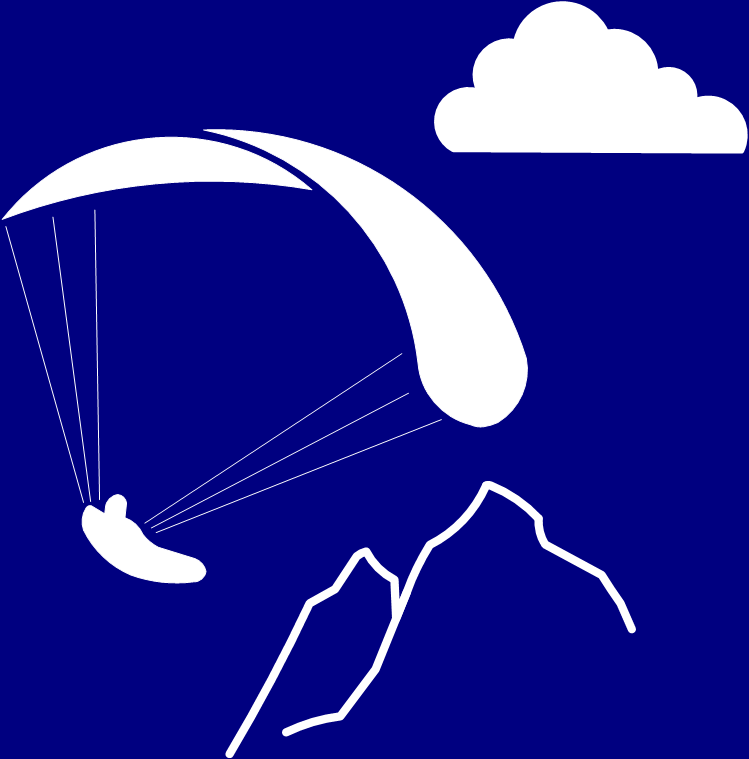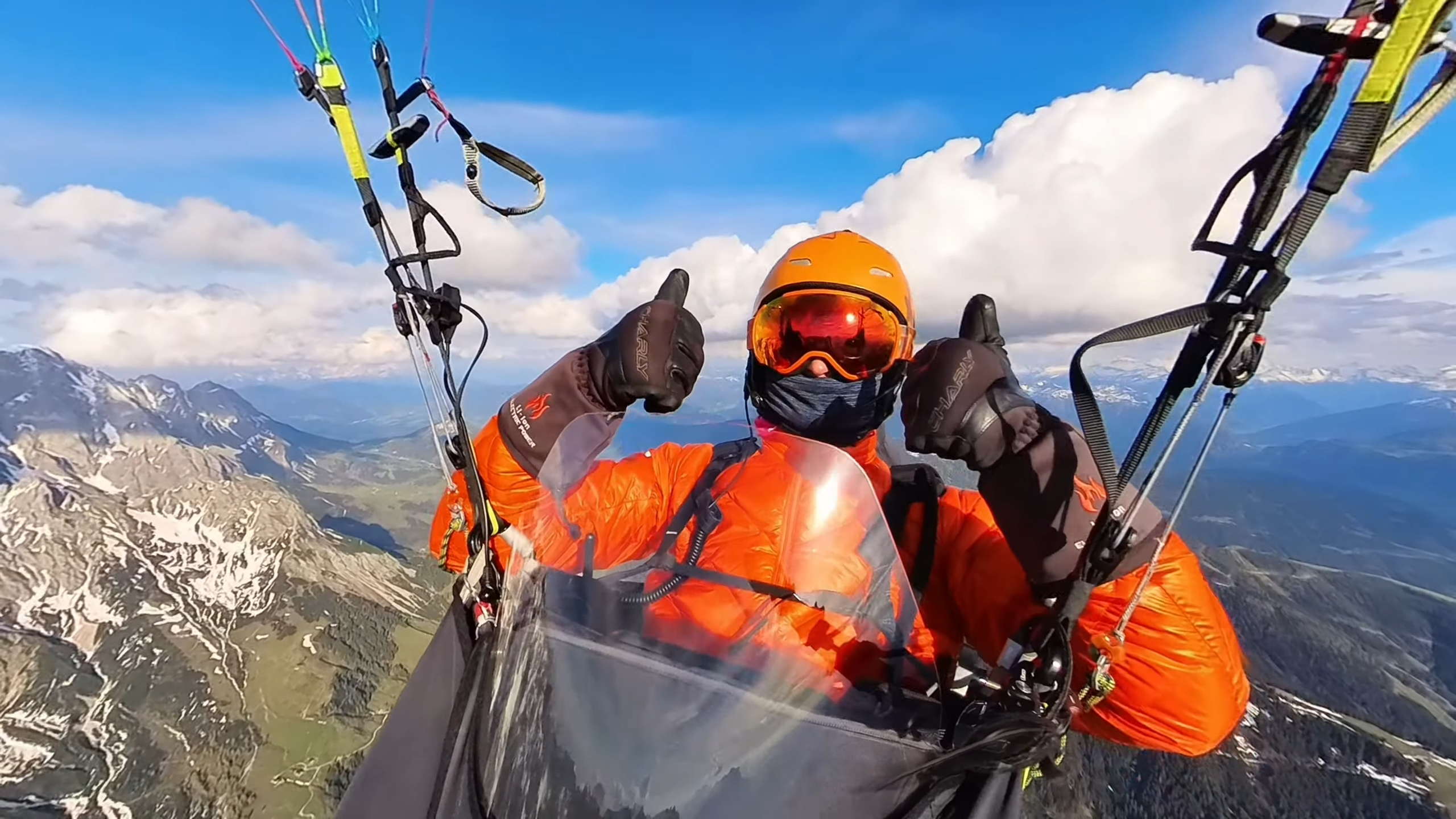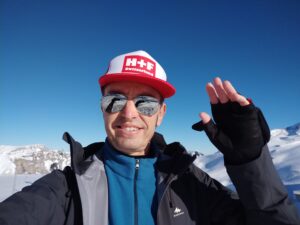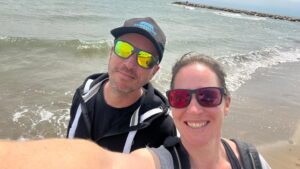There are plenty of stories to tell about cross-country flying. One person who does this in great detail is Dmitry Balabanov. He reaches a large audience with his elaborately produced videos, which he uploads to YouTube. But it’s not just his stories of cross-country flying, often from Roldanillo or Bassano, that he has to tell, there are also other aspects of his flying life that make him an interesting interview partner.
Roldanillo
Ad Nubes: Dimi, you’ve just arrived here from Colombia. How was it?
Dmitry: I have a long and a short story, I’ve had a lot of bad luck this year.
Ad Nubes: The long story, we have time.
Dmitry: Firstly, the wing wasn’t included in the delivery, but got stuck in Madrid for 4 days. That means I had to wait 4 days in Colombia in the best weather for the wing, or actually for all my luggage. It was all in there, I had no shoes, no helmet, nothing, really just flip-flops and a few T-shirts, everything else was in my luggage. It was all there in Madrid for 4 days, and they somehow couldn’t find the wing at first, but when it finally arrived, I suddenly got sick. I probably caught a virus somewhere along the way, at the airport or on the plane, and had a classic flu or cold for a week with a fever, sneezing and a cold. I spent a week in the accommodation. In Colombia, at +35°C. I was lying in bed with a cough and cold and sneezing.
Ad Nubes: How long were you in Colombia in total?
Dmitry: I have been there in total for 3 weeks, 1 week I wasn’t able to fly. When I got reasonably fit again, the weather changed completely. A humid air mass arrived and we had rain every day until 10:00 or 11:00 and had to wait the whole time for the base to rise and the clouds to clear. At some point we were able to fly. But of course these were rather shorter flights, like 70-80, maybe 100 kilometres, but nothing like you would normally expect from Colombia, 200 kilometres or so every day, that was no longer possible. And some days were really very weak.
I was really unlucky: only one relatively large 150 km flight, otherwise the “little things” were around 100 km or less. That was of course a big disappointment for me, especially because the average speed was also very low. The base was low and the thermals were often weak. In other words, we flew slowly. Because of the Pacific wind, you can’t stay on the edge forever, but at some point you have to go to the other side – and that automatically means you slow down even more on the other side. At some point the thermals run out and the day is over. But we still flew every day, 10 days out of 10. That was the experience this time.
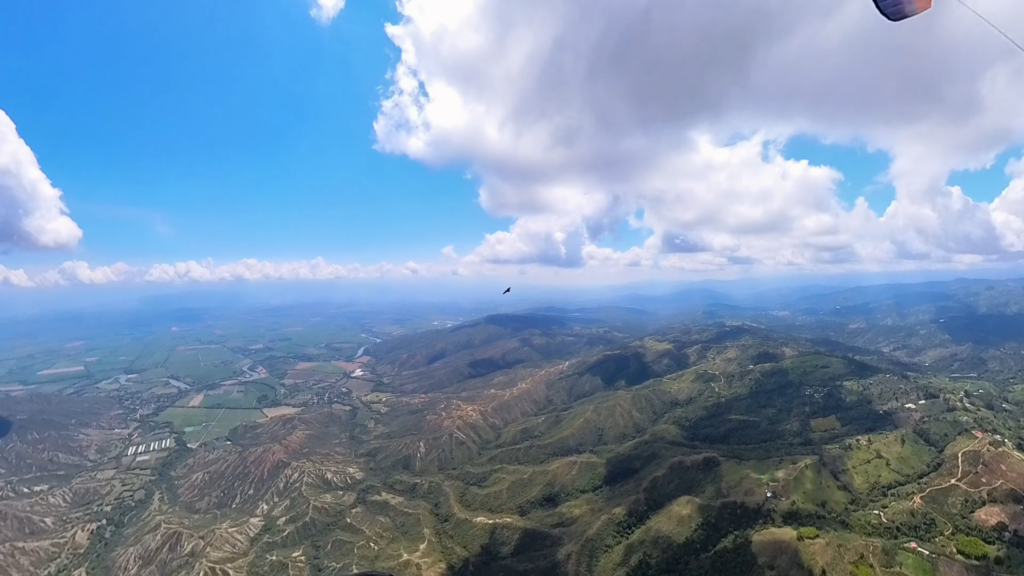
Ad Nubes: The PWC also took place at the same time.
Dmitry: There were many competitions there, really – one competition after the other, I think 4 or 5. First the British Open, then Niviuk Open, Colombian Championship, PWC and then others.
Ad Nubes: But was the journey there still worth it for you?
Dmitry: Yes, I really did fly every day for 10 days. So that’s positive news, i.e. it wasn’t completely in vain. But – it could have been much better.
Ad Nubes: Ulrich who flew in front of you flew more.
Dmitry: Exactly. Everything that was possible. I’m very envious.
Ad Nubes: This hype in Colombia has been going on for several years now. How do you explain that?
Dmitry: I think you really have a special local climate there, that you can fly every day, really every day, and for a long time, like 3 to 4 weeks, if you can do it physically and mentally of course. It doesn’t matter if it’s raining or if the cloud layer is so thick that the sun can’t get through, you can still fly. The air is so unstable that even local triggers such as cars or a bit of wind work. That’s enough for the air to rise and you can fly slowly, but still. If you compare that with Europe in January and February – there’s not much you can do. If then maybe in Bassano 70 kilometres once in 4 weeks. Of course, I think that many people simply use this opportunity to fly so that they don’t have a long break in the season. Normally between October and March there are few flights or only glides, so you lose a bit of the fine feeling for thermal flying. Later, in the spring thermals, you have to carefully feel your way around again. This can be bridged with Colombia, and you can really fly there in strong conditions, even long distances, if the weather co-operates.
Ad Nubes: And when is the best time to travel?
Dmitry: Colombia? I would say that the last 2 weeks of January are probably the best. Also the strongest and the most exhausting, because the thermals are the strongest. It often goes well in February, but this year, for example, it didn’t work. Last year we flew every day in strong conditions until 11 February.
Ad Nubes: Would you still say that the area is suitable for beginners?
Dmitry: Yes and no. So Colombia is different: there is Roldanillo, and in my opinion that is definitely not suitable for beginners. There are a lot of little things or big things that you have to be aware of. Lots of power lines. You can’t get from the take-off site to the landing site in gliding flight (you absolutely have to find a thermal to get to the landing site – there is an emergency landing option somewhere, but it’s small and tricky). Then there are two power lines between take-off and landing – you have to fly over them, not under them, and that is also a challenge. This Pacific wind, it always comes between 13:00 and about 14:00, sometimes earlier, sometimes later, and you really have to pay attention to it – so don’t take off at that time or change sides already, otherwise you’re in the big lee and everything is turbulent. This wind can get very strong, 30 km/h and more, 40 and 50 km/h have also been experienced. That means you also fly backwards when landing. It’s not suitable for beginners, but there are other places to fly. Piedechinche, for example, is a great flying area for beginners. You can fly there all day, from 10:00 to 18:00. There is an official landing site and Pál Takáts is also on site.
Ad Nubes: But is it not so suitable for cross-country flying?
Dmitry: You can already fly routes there, and Pál himself did 200 km from there, but that wasn’t an FAI triangle. The reason is that there is an airport nearby and you simply can’t extend the triangle as much as you like. Small or flat triangles, or one-way to Roldanillo – that’s possible. Normally, people tend to fly shorter distances there because they are not chasing distances, but want to fly relaxed and shorter distances, around 50 to 70 kilometres. Perfect for relaxed flying in winter!
Ad Nubes: And you can always see on the videos that the pilots are driven back to Roldanillo on their motorbikes. Is that the standard return option?
Dmitry: Yes, it’s not just standard, it’s also really popular. You’re still 100 metres above the landing site in the air, you choose a field and you can already see the motorbikes following you. They look where you’re about to land and as soon as you’re on the ground, they come and help you pack up. They also earn money from it. Of course, it’s a small thing for us, you pay €1 or so and they drive you home.
However, riding a motorbike in Colombia is not very comfortable. In my experience, for example, they usually don’t have a speed indicator – none of them work. And they also drive a bit chaotically. The motorbike drivers have their own helmets, but there’s nothing for the passengers. An acquaintance of mine keeps his aviator helmet on when he rides along so that you have something in case of an emergency.
YouTube
Ad Nubes: Yes, let’s change the subject. Let’s go to your YouTube channel. There’s a video there that’s very successful. It’s had over 47,000 clicks. Do you expect that kind of success when you make a video like that?
Dmitry: No. I think one success factor was actually Lucian Haas with his Lu-Glidz blog, because he simply linked to this video. And I think that was at least the beginning for the YouTube algorithm. The algorithm has seen that people are watching the video, and the more the video is watched, the more often the video is suggested to other users. I think the second issue is also the flying area itself. Many people are interested in Bassano. How do you fly a route or the classic triangle there? Everyone knows this triangle, or at least every cross-country pilot. I have also received feedback that the video is well made, with good explanations. (I find that really pleasant to hear!) So that means the video is useful, and it was probably also a success factor. My other videos, which I think are much more exciting and interesting, get far fewer views because that’s what the YouTube algorithm decides.
Ad Nubes: I think you’re already at the top of the list of videos you see. Mostly there are these house mountain videos where someone flies back and forth for hours. That’s totally boring, so you’re really in the top 5%.
Dmitry: Yes, maybe.
Ad Nubes: But how did you come up with the idea of making such detailed videos?
Dmitry: By chance, to be honest. I had a camera with me from the very first day of flying. I’m doing something unusual, I really want to record it! I think I even recorded my test flight with my helmet camera. But I didn’t necessarily want to become a big YouTuber, it was really just for me, as a memory for myself. At some point I made a few smaller videos about what the season was like and uploaded them to YouTube. The videos weren’t anything special, of course, they got maybe 100 views. That was okay for me.
At some point I uploaded a video of how I did a low-save in Bassano. I think that was my first video with explanations. I also posted it on the paragliding forum, along the lines of: “Hey, look, I’ve made an effort to dig myself out of this hole, maybe it’s interesting to watch”. That’s when I really got my first views, my first followers. Then I thought: okay, apparently people are interested, then I’ll make a second video. My videos were pretty boring at first. I didn’t say anything, I just put a couple of text messages at the bottom: here’s this, here’s that. Later, more viewers joined in and wrote comments: “Hey, how do you do this, how do you do that?” Interest slowly grew and at some point I tried to say something. I think that was the Bassano video. It developed slowly, not planned. And now I even feel a bit obliged to make new videos, because on the one hand I don’t want to give up what I’ve started, but on the other hand I also see comments that people want more: “Tell us about your equipment!” or “How do you fly there and there?” I don’t have any big plans to earn money with it, it’s just part of my hobby. Many people “just” fly, and I fly and make videos about it.
Ad Nubes: What software do you use?
Dmitry: I use DaVinci Resolve for editing – the paid version, there is a free and a paid version. I tried the free version first, and before that I tried other tools. There was always something missing, and with DaVinci Resolve I found everything I needed in one tool. I later discovered a few functions that are only available in the paid version, and I also wanted a bit of support. The good thing is that the tool doesn’t have a subscription model, you only pay once and then you have the software. It’s not too expensive either, which is why I bought the software. It’s a pretty powerful tool for editing.
Ad Nubes: The software has very high hardware requirements?
Dmitry: It actually works, but now I don’t think the hardware is an issue at all. My computer is quite old, from 2017 or so, and doesn’t have an awful lot of stuff in it, but DaVinci Resolve still works.
Ad Nubes: What is the scope of work for a video like this?
Dmitry: Lots and lots of effort. Of course, it depends on what kind of video comes out later. For big things like my favourite triangle in the Puster Valley from Speikboden, for example, I spent 80 hours or maybe even more. Editing, recording the sound, all the graphics, writing the script and so on – that’s a lot of work.
Ad Nubes: The animations that you keep seeing are also created with DaVinci?
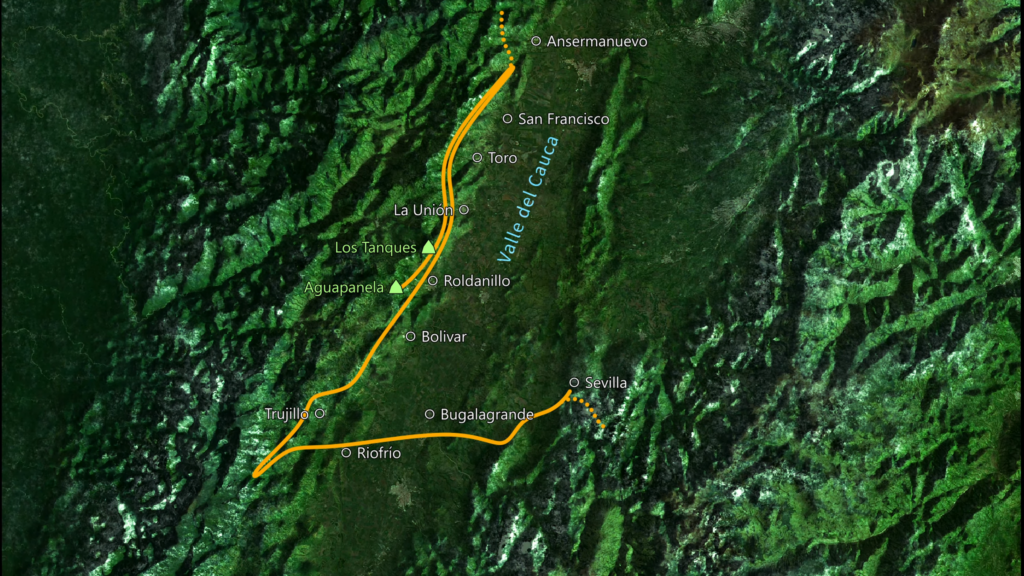
Dmitry: Everything with DaVinci, yes. For smaller videos, where not so much happens, I need 2 days, maybe 3 days.
Ad Nubes: Great, but still a lot of work.
Dmitry: Yes, because I also try to write a script first about what I actually want to show in the video. Then I put something together from the videos, think about which images I need and write the text about what I want to say. Then I record the text, and suddenly the text doesn’t quite fit the video, so I have to choose other images and videos, then create the graphics, and so on.
Ad Nubes: But you did the whole thing yourself? You had no support from a professional?
Dmitry: I actually studied in this field, I’m a media technician. I also used to work in a real TV studio – as a cameraman and editor, but it was more than 20 years ago when I was a student. I also have experience with video processing, which I did during my studies, and my first job was related to that.
Ad Nubes: You also blend in flight data, such as speed and altitude. Is that also possible with DaVinci?
Dmitry: No, I actually need a different tool for this – Telemetry Overlay. This is also a purchased tool. I’ve also tried free tools before. There’s a French pilot, he put together a Python script himself, and he can use it to show things in the video. But it’s very inflexible, you have to write scripts, and for a small adjustment, for example, position or colour, you have to program. In this telemetry overlay tool, everything is graphical, with a graphical GUI interface, and I can put all the displays together. It works wonderfully! The data source is the igc file, and I have written a few scripts to expand the data with additional displays. For example, AGL – this is not available in the igc file. I fetched the topographical data from the Open Topography Server and calculate the AGL altitude with a script. Also the average speed.
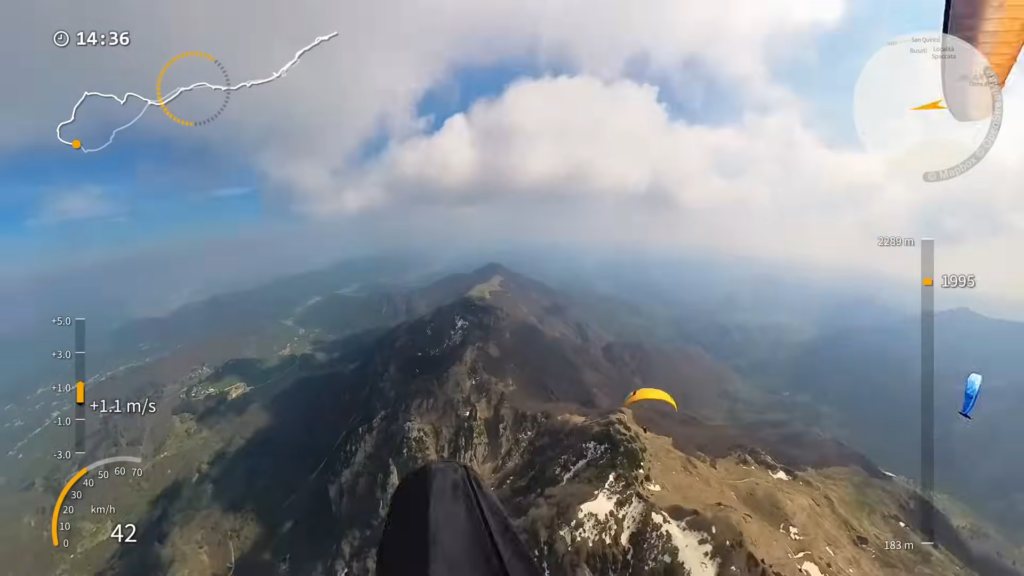
Ad Nubes: I rarely make videos, but I once put something together with XCTrack that actually works quite well. You also have all kinds of data that you can display.
Dmitry: That works too, but the display is only the one you have in the XCTrack. You can’t change it at will.
Ad Nubes: You give a lot of explanations. Actually, you’ve already answered the question, you just enjoy explaining things?
Dmitry: Perhaps a small addition. I don’t see myself as a flying instructor, so I don’t really explain how to open collapses or fly accelerated, that’s not the point. I would like to describe my own experience. In the XC GUIDE videos I explain how to fly the route, I really try to convey my experience, which I have gained on several flights.
Ad Nubes: That would have been my next question. Are these really your own experiences, you haven’t learnt from other pilots?
Dmitry: Yes, some things I took with me, discussed with other pilots or, for example, from books. The video about the long distances, how to fly Big XC: I didn’t come up with the points there myself, but took them from books – from Bruce Goldsmith’s book Fifty Ways to Fly Better and from Gavin McClurg’s Advanced Paragliding. Or the video about the Mölltaldreieck in Greifenburg: I needed the help of Burkhard Martens and took some information from his book.
Ad Nubes: What strikes me positively is that you practically make videos for beginners and also for advanced riders. I think it’s very good that you don’t forget the beginners.
Dmitry: It’s difficult. On the one hand, there are only a few cross-country cracks who fly really long distances. Most pilots are actually quite relaxed, and that’s a good thing. I think 70-80% of pilots fly EN-B and EN-A. However, I personally find it difficult to make more videos suitable for beginners because I only do a few flights suitable for beginners. When I fly, I usually either want to do something big and fast, or there are some weird situations with power lines or something, none of which are suitable for beginner videos.
Ad Nubes: But isn’t it because you want to make a nice video that you go to a certain flying area, but is cross-country flying probably your first priority?
Dmitry: For me, it’s always about flying first and then about the video or a story about it. For many, at least what I see on YouTube, the video itself or the creation of the video takes centre stage. You arrive at a flying site and really want to record something: first there’s an introduction “I’m here, blah-blah-blah, and now we’re flying there”. Then it works or doesn’t work, and then it’s explained why it didn’t work. For me, it’s the other way round: I fly first and then some kind of story emerges on the fly, an XC story.
Ad Nubes: How did you come up with the name XC Stories?
Dmitry: I thought about it for a long time. At first I didn’t have a channel name, just my nickname, but then I thought: that’s not really that meaningful, I need a suitable channel name. So I started thinking: what am I actually doing with my videos or what am I telling with them? Stories from XC flying! That’s how the name came about.
Ad Nubes: You also made a video about risk management. I really liked that too. Safety always seems to be particularly important to you.
Dmitry: Yes, definitely. I really am a very safety-conscious pilot, and I’ve also learnt a lot from the books. The whole risk management story in the video is also partly from these books, for example, this division into tactical risk and safety risk. I think that I could fly much faster and further if I organised my risk management a little differently. But for me, safety is actually priority 1. If you want to fly a 200 in Colombia, for example, you really have to risk certain things. There are 2 turning points where you fly deep into the jungle, without any landing options, sometimes with a lot of wind, deep. Just hope that the thermals will be there. Yes, people do that, the thermals are always there because the air in Valle del Cauca is so unstable, but that doesn’t fit in with my risk management. If I see that I can’t get out without thermals and there’s a chance that I won’t find them, then I can’t fly in there.
Ad Nubes: I’ll come back to that later. What I also really like in the videos is that you also show when you’ve gone stale relatively early.
Dmitry: What you see on social media are of course always the best stories: the best, furthest flights (and the most blatant collapses). The embarrassing things, where you simply stalled straight away or something didn’t work at all, you don’t like to show that. But things like going down right after take-off – that’s just normal cross-country flying, it happens to even the best. (I wouldn’t say that I’m the best, I mean: there are videos of the really good pilots, and things like that happen there too).
Ad Nubes: How big is the willingness to donate? You gave the link to Buy me A Coffee, do people donate a lot or rather little?
Dmitry: A few little things, which really only means a few coffees a month.
Ad Nubes: Now that you’ve just been to Roldanillo, even though the weather was rather modest, will there still be a video?
Dmitry: Yes, there are a few videos. I had some low saves. I’ve wanted to make a video about low-saves for a long time. I really had a lot of different conditions: in the mountains, in the flatlands and over the hills, sometimes with a lot of wind, sometimes with little wind. Now I want to put it all together in a big video and show how I dealt with the low-saves. And a few more stories.
Telegram
Ad Nubes: Let’s move on to the next thing you’re doing, your Telegram channel. You also called it XC Stories. Why did you set up the Telegram channel?
Dmitry: The idea was actually: if anyone has any questions about a certain situation, the flight, the video or my equipment, I thought I would open a direct communication channel. It’s not so convenient to communicate in the comments on YouTube. It’s too asynchronous and the moderation options are limited. So I thought: OK, I’ll open a channel like this on Telegram.
Ad Nubes: There are now over 400 members, that’s a lot.

Dmitry: Yes, there are a lot of them. However, it’s not really active yet. There are questions from time to time or some really interesting discussions. But many members are really silent. I don’t know whether that’s a good or a bad sign.
Ad Nubes: I think you have that everywhere.
Dmitry: Yes, that’s probably quite normal, I think. I’m glad that there were no arguments. There have been a few discussions that were a bit borderline, where people have asked: “Hey, was it actually the topic for this channel? Why are we discussing this and not that?” But I didn’t have to intervene too much.
Ad Nubes: But you do that very well, especially when things get out of hand, you intervene directly in the discussion. That actually works quite well.
Cross-country flying
Ad Nubes: What is cross-country flying for you? What is the fascination for you?
Dmitry: I can’t answer that question for myself. Many people say it’s this feeling of freedom. You can also do something else to get that feeling. I flew once and got hooked, and now I fly often – and I really like cross-country flying. I’ve also tried other flying (acro flying rather limited, a few manoeuvres), but somehow I wasn’t really taken with it. But cross-country flying – I don’t have an answer, honestly – I just really like doing it.
Ad Nubes: What priority does flying have compared to other hobbies you may still have?
Dmitry: I have to admit, I’ve given up almost everything I did before.
Ad Nubes: What was that, for example?
Dmitry: I used to compose music and often attended parties and festivals with electronic music. It’s all in the past – now, when the weather is good, I’m in the mountains. When the weather is bad, I still programme as a hobby. (I also programme professionally, the software developers are really crazy).
Ad Nubes: What skills do you think a good cross-country pilot should have?
Dmitry: That’s a difficult question to answer. There really are so many different good pilots. There are very meticulous pilots who take a very focussed look at the forecast and plan every route precisely. Others fly more by feel. I have met a lot of them and they are all the same. I don’t have a clear answer.
Ad Nubes: Let me go into a bit more detail. You want to do really long cross-country flights and you start at 9:00 am and at 1:00 pm is the strongest thermal time. Mental fitness seems to be a really important factor. How do you see that?
Dmitry: Yes, definitely. However, it’s not like you’re really in stress mode for 9 hours, nobody could cope with that. Of course, there are phases of the flight where things calm down: during gliding passages you can eat, drink, talk to friends on the phone, you just relax. Close your eyes and take a deep breath (the main thing is not to fall asleep!). There are also phases when the thermals are completely calm, you can also relax, circle with a bird and finally observe nature.
Ad Nubes: What role does physical fitness play?
Dmitry: Definitely important. I’ve noticed it too. For example, when I do a long climb with heavy equipment before the flight. I once walked up to the border with my heavy rucksack. You’re tired right at the start, which makes a big difference. The professionals and the really good athletes can cope with it well. I’m not a top athlete and I realised that straight away. If you want to do something like that, you have to train properly.
Ad Nubes: You still flew well?
Dmitry: Yes, the day wasn’t particularly good back then. I landed after 120 kilometres, but it definitely wasn’t the most relaxing flight, also because I was a bit tired at the start.
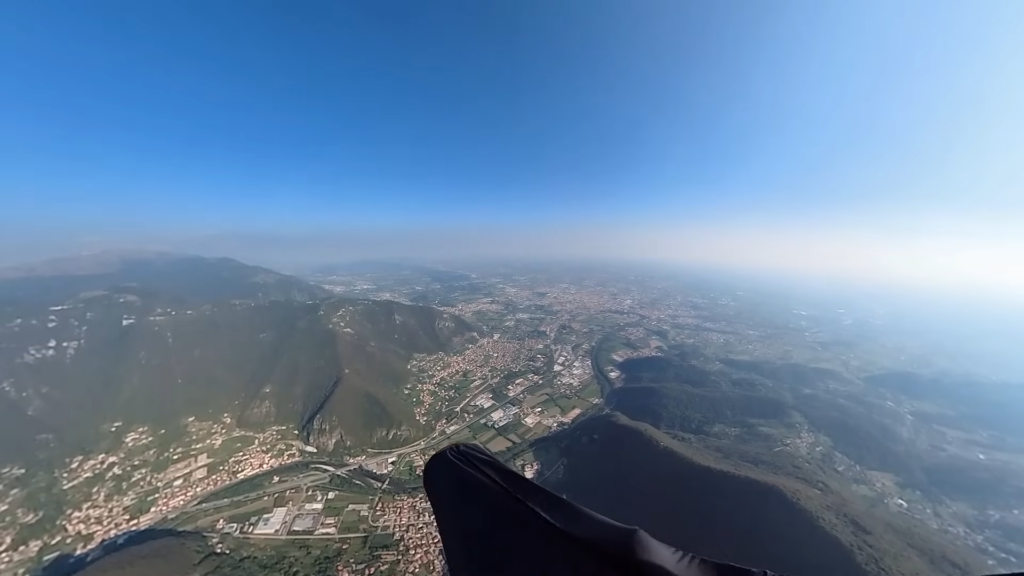
Ad Nubes: What skills do you think one should have to be a good cross-country pilot?
Dmitry: What is a good cross-country pilot? Define it.
Ad Nubes: The one that flies over 100 kilometres, maybe.
Dmitry: I think anyone with modern equipment can do 100 kilometres without any problems. On a good day, even without a speed system, with little wind and good thermals. The day is long in summer, so you can manage 100 kilometres. But a really safety-conscious cross-country pilot, who can react well in critical situations, definitely needs all the technical flying, which means practising manoeuvres. Not “do safety training once in 2 years, I survived it, now I can continue flying”. In my opinion, one SIV, two SIVs are not enough. You have to learn something new every time, in every flight, and simply train and practise. This is only possible if you first learn something really new (for example, in a safety training course). This is the manoeuvre, this is how my glider feels or this is how I react. Then a good cross-country pilot should simply fine-tune this technique. The air moves, that’s how my wing reacts, and that’s how I train this co-operation between myself, the pilot, and the whole system. I think that’s an important aspect. Another important skill is endurance. Yes, of course, to sit in a small harness like that for 9 hours and do a bit of rowing, you need a bit of stamina. It’s not that interesting for everyone. I know some good cross-country pilots who can fly the long distances, but they say: “After 3 hours I don’t enjoy it any more, I just land”.
Ad Nubes: You fly a 2-liner, what do you think is particularly important when flying a 2-liner? Which manoeuvres should you definitely master?
Dmitry: I’m probably not the best person to talk to about this, it’s better to speak to a safety trainer. But it’s not news what the 2-liners do differently to the 3-liners. We have fewer lines, so the gliders have more tendency to hang. The stall behaviour is different with them than with the 3-liners, the distance between the leading edge and the A-plane is greater with a 2-liner. That’s why I think that every 2-liner pilot has to deal with the stall behaviour in any case. So – full stalls, but not to fly them nicely, but to understand what the glider is doing. How do you get out of it and how can you use it? To open a hang-up, or in some situations you can’t get out of some stupid glider condition and really have to stall the glider and start all over again.
Ad Nubes: I think there are now safety training courses that are specially designed for 2-line paragliders.
Dmitry: Yes, I attended a safety training course at Heli – the Safety Pilot Coaching. It wasn’t a special 2-line training course at the time, but there were a lot of people there with 2 lines. I was still there with a 3-liner. As I mentioned, there are certain things that are different for the 2-liners than for the 3-liners. With the 2-liners it’s different with the rattles, you can’t just pull the rattles as usual in the SIV. You need folding lines or you induce collapses in other ways if you really want to, for example, pull the brakes in accelerated flight, or French exit, or don’t support the outside from the wing over, jump out of the full stall and don’t brake.
Route planning
Ad Nubes: Right, let’s make a new topic. Do you do the route planning, do you plan your routes beforehand?
Dmitry: I am a “lazy” pilot. I don’t plan routes myself where nobody has flown before. Before I fly a route for the first time, I look it up on the internet. DHV-XC or XContest – how the route has been flown before. There are pilots, such as Uli Strasser or Marcel Dürr, who fly something completely new that nobody has ever flown before, and I think that’s really cool. I’ve never tried it, but I have the feeling that I couldn’t fly something like that really well. Probably also because my risk management means that I would simply cancel a lot of things straight away. I often feel like this – I fly somewhere and analyse: “OK, there’s a big lee, I don’t want to go there, and there’s a valley wind, I don’t want to go there either”. What do you do in an unknown area where you have no idea where the valley wind is coming from or where the lee is? I fly in areas where I know my way around relatively well and have an idea of the valley wind system. Of course you can also feel the wind in the air, but sometimes it is deceptive.
I don’t plan completely new routes in unknown areas, but I do plan familiar routes – that’s what I deal with. I don’t set any waypoints on the route – just a rough idea of where I need to set my turning points.
Ad Nubes: What tools do you use, Google Earth for example?
Dmitry: I rarely use that. I mostly use DHV-XC and XContest simply to see where and how the others have flown. You can also see the terrain reasonably well there. There are also route planning tools such as FlyXC.app and ThermiXC. I also use these from time to time.
Ad Nubes: Are you more of a points or XC kilometre hunter?
Dmitry: What’s the difference? More kilometres or more points?
Ad Nubes: What is your priority when you make plans?
Dmitry: If I had a focus on kilometres, I would probably always fly one-way. I prefer to fly triangles, which is probably why I prefer points.
Ad Nubes: You’ve actually already answered the next question, you do relatively rough planning. Can you still give us a tip regarding take-off altitudes? That’s always a sticking point for many pilots, having to descend when crossing a valley. Do you have any tips for minimising the risk?
Dmitry: That’s a difficult question. It’s different every time: how is the wind up there and down there, how does the day feel, have there been many strong thermals before or has it always been so tough and tiring? Depending on such factors, I always decide whether to climb to the base or not. If I suspect that I will have a lot of headwind or that it will be difficult to get in on the other side (because of the valley wind or everything is still in the shade), then I try to maximise the height, i.e. the base. If the day feels good, I have a good average speed, the thermals work reliably (in the places where I expect them), then I try to fly speed-optimised and aim for roughly how much altitude I need. I already have a few figures in my head, for example, for Bassano. But that’s really only for some areas, otherwise it’s all by feel.
Ad Nubes: You’ve already mentioned the valley wind system, do you have a special tool for this?
Dmitry: I have the valley wind maps from Viento. I’ve studied them, they’re really good, they really help. However, there are also days when the valley wind is the other way round. In some valleys, when the cross-regional wind is different, you sometimes encounter a different valley wind direction.
Ad Nubes: And airspaces should actually also play a role in planning.
Dmitry: Definitely. It’s a bit easier for me, I only fly known routes. That means the airspaces are actually quite clear. Of course, I check the NOTAMs every time before the flight to make sure everything is still in the green zone.
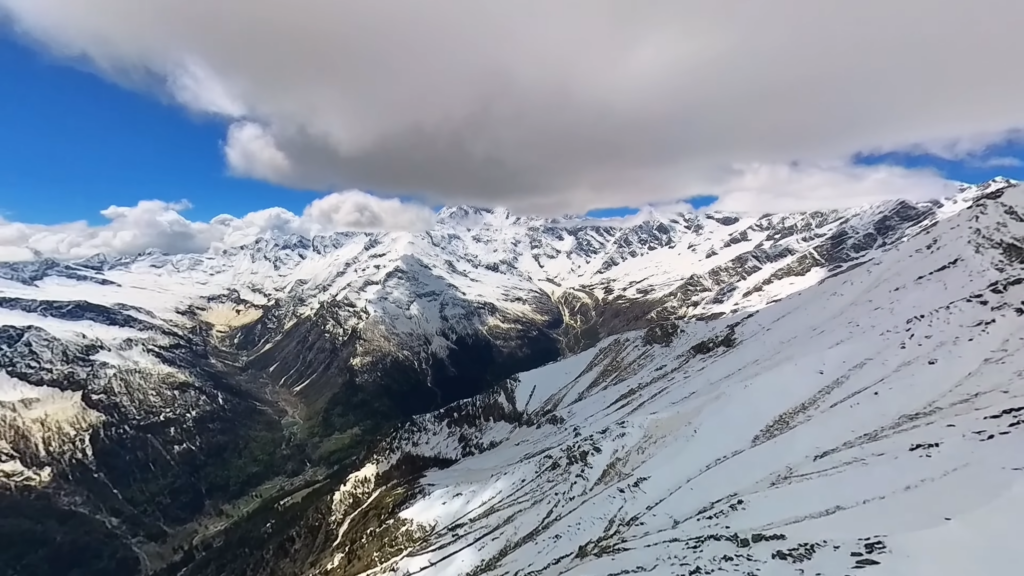
Ad Nubes: Why don’t you have a look at the emergency landing sites first?
Dmitry: I don’t do that beforehand, I do it in the air. However, I don’t take care of any landing sites at the base, that doesn’t interest me much. When I get lower, then of course I look: where is my option B, C or D, where can I land? I don’t always have any landing site in mind, but only when I think I might need one in the near future.
Ad Nubes: OK, you’re not taking the risk of flying over wooded areas, for example, where the nearest landing site is outside the glide angle?
Dmitry: That’s another difficult question. I’ve already partially answered it: in Colombia, I’m not allowed to go into the jungle because I know that if there’s no connection, I won’t be able to get out. It’s usually the same in the Alps. However, there are sometimes situations when I’m flying along a ridge and feel that the air is carrying me well. Then I can extend my reach a little. This also means that I might fly over an area that I would normally avoid in the sinking air mass. At the Mornera triangle, there were a few places where I had to fly along the ridge, but there were no landing options down in the valley. Normally I would really base before that. On this flight, however, the air felt really good and supportive. I also noticed how the others were flying up ahead and that they were also able to climb and fly further.
Ad Nubes: Do you have any route recommendations for us for someone who wants to crack the 100 or 200 kilometres for the first time?
Dmitry: It depends on the weather. Sometimes even a 100 is not possible everywhere, sometimes a 200 is relatively easy. There are a few flying areas in the Alps that are relatively easy. The Mölltal triangle is certainly one of the options, but it’s not at all suitable for the first cross-country flight. You could also try the Pinzgau triangle from Kössen. Of course, bear in mind the Bavarian wind and the lee. Somehow you have to pay attention to something everywhere!
Ad Nubes: I used to live in the lowlands and then moved here 5 years ago and thought I could easily fly the 100 kilometres, but unfortunately it’s not like that.
Dmitry: It’s a bit more difficult, but that’s also why it’s more interesting, I think. However, flatland flying is black magic for me so far, I can’t do it.
Ad Nubes: You made a video where you flew around Lake Chiemsee, didn’t you?
Dmitry: No, I didn’t make the video. I tried it 5 times and stalled 5 times. I had a flatland flight of 160 km, that was a pure coincidence. I don’t know how it worked out, I had no idea what I was doing, I just flew with the wind. I find flying in the mountains more complicated, but also more exciting.
Ad Nubes: Have you ever tried the Glacier Triangle?
Dmitry: No, I haven’t tried it yet, probably this year, let’s see. I haven’t got round to it yet.
Ad Nubes: Interest is already there. You could almost say that Georg is the glacier triangle crack.
Dmitry: Philipp Reiser was the first to complete the triangle, but unfortunately didn’t quite finish. It wasn’t quite enough to reach Lenggries, but it was actually a complete triangle.
Equipment
Ad Nubes: What instruments do you have with you?
Dmitry: I have a Vario XC Tracer Max connected to a mobile phone via Bluetooth. These are my 2 flying devices.
Ad Nubes: You also have XCTrack installed on your smartphone. Are you doing something similar to what Georg presented, that you only have one screen where you display all your data?
Dmitry: No, I have 3 different ones, and they actually change: thermal assistant, the big route overview with weather radar road maps, and the live tracking page with the most important parameters is my main page.
Ad Nubes: What strikes me about you is that you like to wear orange-coloured clothes. Where does your affinity for orange come from?
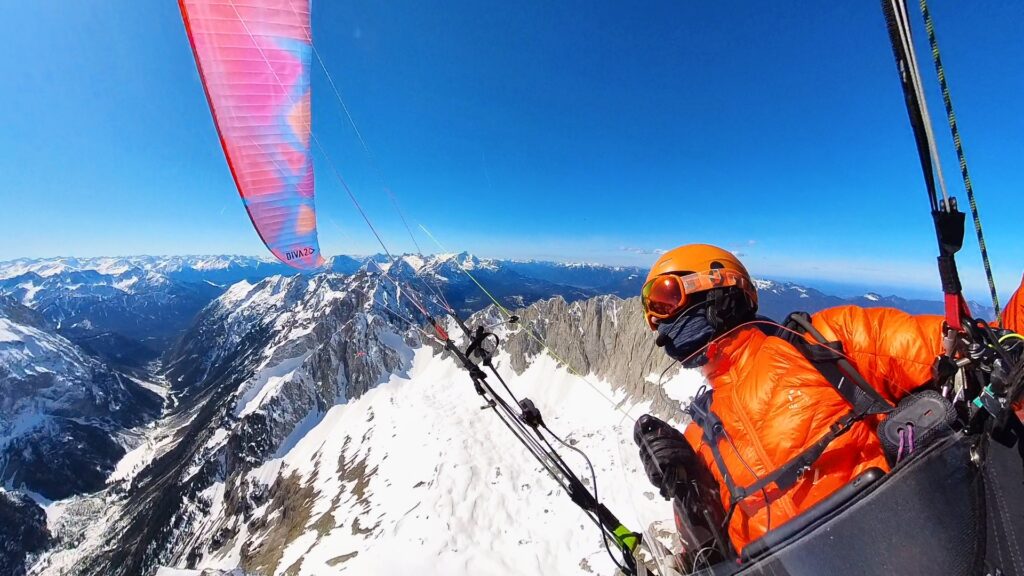
Dmitry: I just like the colour, and it’s also a safety factor. In the event of an emergency landing or somewhere in a remote area, if you have a colourful glider and colourful clothes, you’re easier to spot if necessary. And also in the air: you can see everything in black worse than an orange helmet and an orange jacket. Maybe that could also help to avoid collisions.
Ad Nubes: Ulrich developed the Thermal Map, do you use it?
Dmitry: No, to be honest I haven’t tried it either. I’ve integrated the website as a widget in XC Track, but somehow I’ve never got round to switching to the page and looking at what’s shown there. I’m ashamed, I’ll have to give it a try.
Ad Nubes: I’m also going to try it out. He says it really does help, but that’s probably what every developer says about their product, but you have to try it out. You’ve already mentioned the thermal assistant, from your point of view does that help you?
Dmitry: I only use it for one thing: if I suddenly lose the thermal tube, I want to see where it was. In particular, if the thermal is displaced by the wind and I fall out somewhere, I want to see where I have to go to get back into the thermal immediately.
Ad Nubes: And from his point of view it works reliably?
Dmitry: Yes, it has always worked for me. Otherwise I always centre by feel. So I don’t look at the screen and see where the best climb is. I fly by feel.
Ad Nubes: Then there are 2 different settings for how the wind offset is calculated.
Dmitry: Yes, there are 2 different types. I set something, but I can’t remember what exactly, and I don’t change anything.
Ad Nubes: The wind force is probably calculated by the XC Tracer, I suppose?
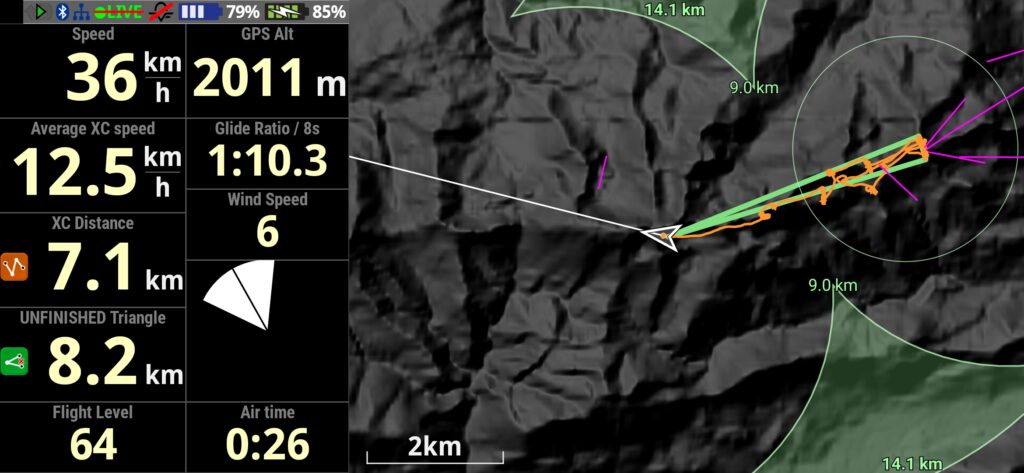
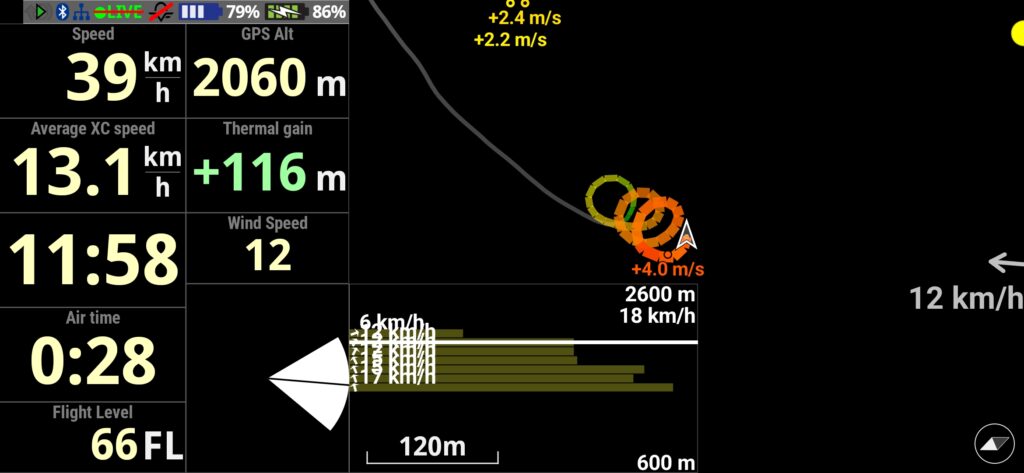
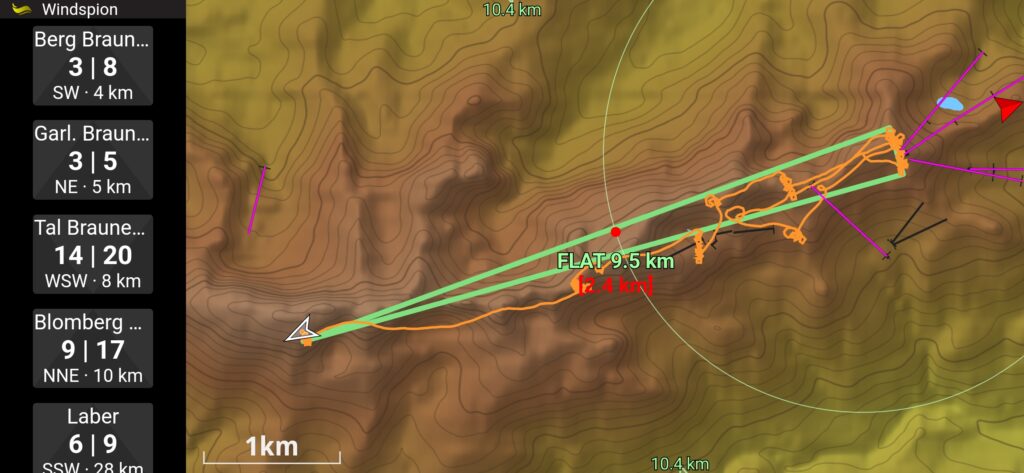
Dmitry: I use both independently. I compare the direction and strength of the XC Tracer and XC Track independently to have 2 data sources. Sometimes one device is wrong.
Ad Nubes: How do you keep in touch with your fellow pilots, do you use Zello or radio?
Dmitry: Radio. We wanted to try Zello, I even installed the app, but I don’t have a Bluetooth button for it yet, and it’s quite difficult without it. We also haven’t found a way to configure a screen overlay widget so that you could simply activate it on your mobile phone with your finger. But that would probably be quite cumbersome too. In my radio setup, I have my push-to-talk button on the riser and I can radio at any time when flying, thermal circling, accelerated flying, without losing control of the glider.
Ad Nubes: Which glider do you fly?
Dmitry: The Diva 2.
Ad Nubes: Is she so bitchy because you say that?
Dmitry: Hm, it’s actually “the wing”, but many say “the diva”. I don’t know which option to choose…
Ad Nubes: Are you coping well with it?
Dmitry: Yes, I really like the glider. I’ve now clocked up almost 60 hours with it in 2-3 months. I’ve enjoyed everything so far.
Ad Nubes: You fly the Impress 4 harness. Is that the best harness for you?
Dmitry: For me at the moment, yes. I’m already looking to see if I can get something new, because my harness already has 1400 hours of airtime, which is quite a lot. Everything is still intact, but unfortunately there are a few small cracks on the rump. I had to replace the leg bag once because the fabric had stretched so much that the leg bag no longer closed. And at some point the fabric became so weak that the place where you always get in with your leg slowly started to tear. Apart from that, the harness is still great. There are a few little things that could perhaps be improved, but otherwise the harness is really the best for me at the moment.
Ad Nubes: You fly for a relatively long time, I mean hours technically, what food do you take with you?
Dmitry: I always have small salami sausages with me, a few muesli bars and oat bars, i.e. with oat flakes. They’re really cool, with a bit of chocolate or nuts, they taste really delicious and give you a lot of energy and are also very filling.
Ad Nubes: Do you have anything for emergencies?
Dmitry: I only have my satellite communication, my inReach, with me for emergencies.
Ad Nubes: Bandage stuff like that?
Dmitry: No. Maybe I need to think about that. It’s actually part of risk management, but so far I haven’t had any incidents, accidents or injuries. That doesn’t mean anything, something can happen to anyone.
Ad Nubes: You record all your flights on video. Do you have a 360-degree camera?
Dmitry: This is an Insta360 X3. I had an X2 before that, and at some point there was a problem with the Wi-Fi connection. That’s when I bought a new X3. Now my X2 is with Uli, it works, but unfortunately this WLAN connection to the mobile phone doesn’t work with the camera.
Ad Nubes: Why do you need them?
Dmitry: You can edit videos with your mobile phone. I’ve never done that, I’ve always downloaded everything to the PC with a simple USB cable. You could still edit with the WLAN function via the connection to the mobile phone, but that’s not possible with Uli’s X2.
Ad Nubes: You use a mount for your action cam that you have attached to the carabiner. What make is it?
Dmitry: It’s simply a clamp, a special camera mount for attaching to a bicycle, for example. It’s nothing special for paragliders.
Ad Nubes: Do you still have a camera with you or don’t you take any photos?
Dmitry: I don’t take any photos. The good thing about this 360 camera is that I switch it on and then it runs for 9 hours. I don’t worry about whether the angle is right or whether something suddenly needs to be recorded. For me, it’s completely faded out, I’m no longer interested in the camera. I concentrate on the flight.
Ad Nubes: You don’t make comments on the fly?
Dmitry: No. I wanted to try it, but I realised that something else would suffer. I either talk rubbish or I fly badly. I’m not quite as good at multitasking.
Weather
Ad Nubes: What tools do you use for the weather forecast or thermal forecast?
Dmitry: You know the tools: XC Therm, I have a subscription to meteo-parapente and Windy, Soaring Meteo and Astro Control. These are the most important sources that I use.
Ad Nubes: Then you compare these tools with each other.
Dmitry: Yes, exactly. Not all data is available everywhere. XC Therm, for example, has no pressure difference. I look at what Astro Control says and what it looks like on Windy. I compare data from different sources, sometimes the wind statements are also different. Different models provide different data, and you can put together the big picture.
Ad Nubes: What would you say, in the Alps, which weather model is the best when it comes to wind strength and wind direction?
Dmitry: Difficult. I find that the Icon-D2 is particularly good at dealing with the foehn and valley winds. You can really see these foehn winds or the valley winds. That doesn’t mean that you can predict the wind strength exactly, but otherwise the Icon-D2 gives you a good overview. Today it’s stronger, yesterday it was weaker. Tomorrow you could expect a bit more. I never pay attention to an absolute figure, whether it’s 35 km/h or 25 km/h. Anything can change, but a rough direction, whether it’s a strong wind or a light wind day, that’s more important to me.
Ad Nubes: From your point of view, how well do the thermal forecasts work these days?
Dmitry: Last year I had the feeling that the thermal forecasts were not reliable. We often had cases like that when, for example, XC Therm in Bassano showed 0 kilometres and we did a 100. So something wasn’t right. When we went up to the Staller Sattel, the forecast was also great. Light winds, good thermals, a high base, everything looked perfect – actually, after a last really good big track day of the season, it looked like we might be able to get another 250. When we got to the top, the wind was strong and from the wrong direction, not as forecast. Then there was a big inversion and later there was a brutal headwind for the people who did manage to fly a bit longer than me. They landed voluntarily because they couldn’t make any more progress, so the forecast was totally wrong.
Start preparation
Ad Nubes: Which tool do you use to retrieve the NOTAM?
Dmitry: I use the website notaminfo.com.
Ad Nubes: Do you have checklists at the start or do you prepare for the start off the top of your head?
Dmitry: Checklists? Well, the 5-point check is always included, as I learnt in flight school. I don’t have a checklist, but rather a ritual when putting on my harness. I know that my harness has exactly 7 buckles that need to be fastened. And I count from 1 to 7 every time. I know for sure that when I’ve counted through to 7, everything is properly fastened. If someone suddenly comes in between, asks something or I get distracted, I stop, open everything up again, answer the question and then I start counting everything from 1 to 7 again. I’ve been doing this since 2016 and I’ve never had anything not close. I also do this ritual when I switch to a different harness, then there are maybe 6 or 8 buckles.
Ad Nubes: Will you call the weather station in the area again regarding wind?
Dmitry: No. I have actually installed a widget in XCTrack where the wind display from the nearby wind stations is automatically included. But I’ve never used this before. You can feel the wind for take-off anyway, and with a bit of experience you can also judge whether it’s a rotor or the wind is actually coming from the front. Whether it’s 15, 17 or 20 km/h doesn’t really matter.
Start
Ad Nubes: When it comes to the starting decision, what criteria are decisive for you to say, now I’m starting?
Dmitry: Sometimes it’s also important to see what the others are doing. If someone has taken off, whether they are climbing or landing straight away.
Ad Nubes: You’re not the early bird?
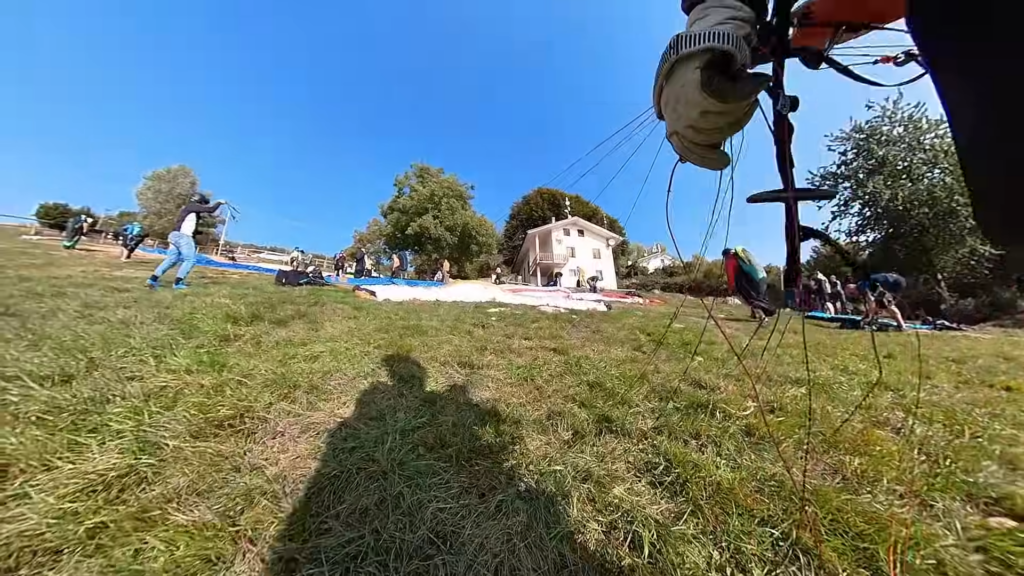
Dmitry: Sometimes I’m also the first to start. I observe the thermal cycles, which is pretty typical in Bassano. The first release comes, it goes through, then the second, it gets stronger. You can already guess, OK, something’s coming. If none of this is meaningful, then you just have to try. There was one case: we were at the Hochries, a few pilots took off and just flew down. At some point, no-one wanted to take off any more, everyone thought that nothing would work anyway. We waited for ages and then Uli persuaded me, “Hey, let’s give it a go and see if anything works”. I was actually the first to take off, found a thermal – and then the cave opened, everyone suddenly wanted to take off!
Flying
Ad Nubes: When you fly, you usually also observe the weather. What is the decisive factor for you?
Dmitry: It’s important to understand where you’re flying. In the high Alps it’s one thing, in the lowlands it’s another, in Colombia it’s a third. In Colombia, it is well known that the air is generally very humid and many small rain cells can form, which are very localised and easy to fly around. In the Alps, when I see a rain cell, I really think about whether I should land soon, because a huge rain cell or a thunderstorm cell can form really quickly in the Alps. And then it’s no longer fun.
Ad Nubes: Have you had to situation where you landed before the rain?
Dmitry: Two or three times in Colombia. I landed in Colombia once and saw lightning while I was still in the air. I was under this cloud 20 minutes before. I have a video about it. Colombia is a bit different: the rain clouds can be really small. Of course, a thunderstorm is always dangerous, or a rain cloud in general. In Colombia, you simply observe the surroundings, and if the rain cells appear everywhere, then it’s clear that you should land. If a small rain cell is far away and the wind direction is still right, then I think it’s still OK. You also observe what the cloud does. I recently posted a video when I simply flew past a heavy shower. The rain cloud rained down 15 kilometres away. I never do that in the Alps.
Ad Nubes: This is then channelled in the valley. The outflow of cold air is the dangerous thing.
Dmitry: Yes, that’s right.
Ad Nubes: There’s a ridge there, but then it’s flat outside.
Dmitry: Yes, Valle del Cauca – it’s a very wide valley and it was very damp in the mountains this time. Whenever we noticed that it was getting a bit darker in the mountains, we got out immediately. If you get caught in the rain in the mountains (also because of the outflow of cold air and often unlandable valleys) it’s no fun. You have more options in the lowlands.
Ad Nubes: Do you monitor the weather station in the area for wind?
Dmitry: As I mentioned before, I have a widget configured in XCTrack and have never looked at it.
Ad Nubes: How do you organise your thermal search? What things do you look out for?
Dmitry: That’s a really difficult question. I don’t think there is a cure for everything. It’s different every time. How high are you, how is the wind or how unstable is the air in general? How does the day feel?
Ad Nubes: Do you pay attention to certain features on the mountain, whether there are bare rocks or wooded areas?
Dmitry: Yes, of course, the terrain is important, also understanding what the valley wind does or generally what the wind situation looks like, how the tube can be bent close to the slope. The terrain also further down, the surface. And what else I use: I have configured my vario so that it already starts to make noise when there is a -0.5 m/s drop.
Ad Nubes: Really?
Dmitry: Yes, then it means that the air around me is rising at 0.5 metres per second, with a sink rate of 1 m/s. There could be a thermal tube somewhere nearby. This alerts me and I then try to understand where the wind is coming from and what the terrain looks like below. Where could this thermal tube break off? And that’s how I catch the thermal.
Ad Nubes: I have currently set my vario so that the curve is extremely steep. Let’s say from 0 to 4 metres climb, the beep frequency is very steep so that I can centre the thermals better.
Dmitry: I did it the other way round, for me it doesn’t make a big difference whether it’s 4 m/s or 7 m/s. 4 m/s is good, 7 m/s is even better, but it’s not decisive, only for competition pilots perhaps. For them it makes a big difference whether you stay in the thermal for 30 seconds or only 25, because they are fighting for every second. For me it doesn’t really matter, I don’t really like it when the vario is screaming so much that my heart is racing. I have set it a little muted. However, in the lower range, between -0.5 and +1.5 m/s, which is a very sensitive range for me and where I want the most information, where it climbs better. The sound is in real time and the sound can tell me, aha, it climbs better there, it climbs faster there, so I can centre better or find the thermals.
Ad Nubes: Can you give me some tips on flying tactics, when do you leave a weak thermal and try to find the next stronger thermal? I know it’s also a gut thing that you can just train yourself to do.
Dmitry: I think it’s how the day develops, how the day feels. You realise: OK, the first thermal was 3 m/s, the second thermal was 3 m/s and now I’m in a 1.5 m/s thermal. Do I need it now? No, not really. I fly a little further and then I get a 3 m/s thermal again.
Ad Nubes: Yes, I know, it’s hard to put into words, you just have to experience it.
Dmitry: Yes, of course at some point there is an altitude where you think: okay, now I really need a thermal. And if I find a 1.5 m/s thermal there, then I’ll start cranking, otherwise the alternative is either another low-save (and that’s always really time-consuming and the result is uncertain) or a landing. If I get to a critical altitude, then I’ll also crank something weaker.
Ad Nubes: The subject of target speed theory, MacCready and the use of accelerators, what tips can you give us?
Dmitry: I wouldn’t give any tips on this because I don’t fly MacCready and generally don’t fly the way most cross-country pilots do. Many have the idea: always fly at full throttle, the faster the better. Or: full throttle if you can. That’s how you would actually fly with paragliders after MacCready, because MacCready is more relevant for gliders, for us the speeds are relatively low anyway. If you apply this to paragliding, then on a good day you should almost always fly full throttle – cranks – full throttle – cranks.
I never fly like that, I don’t want to. My flying style is similar to what Kelly Farina says. For him, it’s more important how high you get and how efficiently you fly in the current conditions. This means that on a good day with a tailwind, I sometimes fly in trim because I arrive higher. It’s a little slower, yes, but for me it’s more important to perhaps arrive higher in the situation because it’s a little shaded in front or because the entry is more difficult there from experience. Sometimes I also fly at low speed or in trim. If I have to, I can also fly at full throttle, but rarely. Flying at full throttle all the time – that’s not my flying style. Maybe that’s also the reason why I haven’t had a 300 yet.
Ad Nubes: But you also do that by feel.
Dmitry: Yes. I’ve simply configured the accelerator in such a way that my first stage is accelerated by 50%. That’s my standard speed. Then I have the second stage: when I think that for some reason I should fly a bit faster (because I just had a strong thermal and I expect a strong thermal). The second stage is about 80 %. And the third level is full throttle for me. I use this relatively rarely, for example when I see other pilots up ahead being blown up like crazy, then I fly at full throttle to this thermal because I can save time. Or very strong wind, so I have to fight against it. Or if I have to flee, for example from the rain. But in general, I rarely fly at full throttle.
Ad Nubes: Sometimes you can’t get back to the official landing site. What do you look out for when you have to land somewhere outside? What is important when choosing your landing site?
Dmitry: With the D-gliders I really have to choose larger fields. They always glide so well, take every air movement with them and convert it into height. It’s really more difficult to land on smaller areas with these wings. I had no problems at all with my C wing, even the smallest clearing – everything went well.
Ad Nubes: I think you also upload your flights to DHV-XC and XContest, but you don’t write anything. I think that’s a pity. Why not?
Dmitry: Why? I have never asked myself this question.
Ad Nubes: Would be nice to benefit from your experience, you have a lot to tell.
Dmitry: Maybe…
Ad Nubes: Ulrich does it very differently, he writes a lot.
Dmitry: Uli does it really well. I read his perception of what happened during the day and sometimes think: oh cool, I experienced that too. But I’ve never written it myself before.
Ad Nubes: Think about it, maybe you’ll do it in the future.
Accidents & errors
Ad Nubes: You haven’t had a serious accident yet?
Dmitry: None. There were a few scratches, recently in Colombia too, where I experienced a pretty interesting situation. I landed in a strong Pacific wind. The strength was still okay, I went down vertically, the wind was around 30 km/h maybe, still within my limits. Suddenly I had a 7 m/s sink rate, really about 20-30 or 50 metres above the ground – difficult to estimate – unexpected, it didn’t stop, I thought: oh yes, now you’re going to break your legs. I was still flying with ballast, with my heavy stuff. It then slowed down a bit just before the ground, only 4 m/s, and then there was a hard landing. I bombed in, was still able to cushion with my legs, then dropped sideways because the impact was so energetic. I didn’t hurt myself, but it was a story with injury potential. Unfortunately, my harness got a small tear and got caught somewhere. I also got a few scratches because I fly in shorts, but nothing more.
Ad Nubes: Have you ever had a situation where you would say you were more lucky than good?
Dmitry: “More luck than sense” – never, but “just luck” – yes. The last story I just told, I was really lucky that I didn’t injure myself. I wasn’t the only one there in Colombia: Yassen Savov, the Bulgarian competition flyer, actually broke both his feet in the same situation, also sinking massively just before the load, also flying with ballast. Neither of us expected that.
Ad Nubes: The salvation still pull maybe?
Dmitry: That was too late and too deep, I think.
Ad Nubes: You fly with ballast. How many kilograms do you have with you?
Dmitry: I have 5kg of ballast.
Ad Nubes: Water ballast?
Dmitry: Water ballast, 4.5 to 5 kg.
Other, goals
Ad Nubes: Competition flying, is that an issue?
Dmitry: Not for me. I don’t think I’ll ever try it, for two reasons. Firstly, I know how I react to things like that: I will want to push. And that doesn’t go well with my risk management. My risk management is something I do consciously. I think about it and I make decisions. The pushing comes from instinct, and you can’t really suppress that with your mind. I don’t want the two things to clash.
The second thing in the competition (at least that’s my perception): you rarely implement your own decisions, you always fly with the pack, and if the pack flies somewhere, then you have to go with it. At least I as a layman would have to do that. Of course, pilots with a lot of competition experience like Maxime Pinot, Daniel Tykas or Martin Petz can make their own decisions, but rarely do all pilots fly completely independently in competition. That also means flying into areas where you wouldn’t fly in yourself as a free pilot, for example, accelerating fully downwind. The others do it, then I do it too. In a competition, I wouldn’t have the freedom to make my own decision and implement it. Sometimes it’s like this in cross-country flying: my planned turning point is there, but somehow it feels strange for me today, so I don’t fly there, I set the turning point somewhere else. I can’t do that in a competition.
Ad Nubes: Yes, we’ve basically already covered the other topics, hike and fly, acro, that’s not your thing?
Dmitry: Hike and fly – actually good for your health! I’ve bought some light equipment, everything except a glider. I have a light harness, a light rescue and a light helmet, but haven’t found a glider yet. I’ve tried many, really many, everything from B to D. So far I haven’t been really happy with any of them. There are now a few newer models on the market, so I’ll try something again.
Ad Nubes: What other goals do you have? What plans?
Dmitry: My goals are to stay healthy and accident-free – goal number 1. That also means sticking to my risk management. This is my hobby, I don’t fly competitions, I don’t earn any money from it, so my main goal is to stay healthy. Having fun is the second goal.
Ad Nubes: You’ve probably cracked the 200 kilometre mark more than once, haven’t you?
Dmitry: Yes, a few times.
Ad Nubes: Then it would be the 300 kilometres.
Dmitry: 300 kilometres is quite a big number, that would of course be a dream. The weather also has to co-operate, let’s see what this season brings, last season wasn’t so nice for flying. I don’t think there was a single 300 kilometre triangle in the Eastern Alps. Only in the Western Alps, in the French Alps.
Ad Nubes: Perhaps one last point, your club activities. You are the second chairman of the Bodenlosen. Would you like to continue doing that?
Dmitry: The first chairman always asks me this question 🙂
Ad Nubes: Would you like to continue in the team?
Dmitry: Let me put it this way. As a board member, you have a lot of organisational work, and I’m not the best organiser. When it comes to organising events, finding restaurants for our lectures where there are enough seats available and negotiating deals, what minimum turnover we need – fortunately our treasurer Jörg does that for us, he does a very good job. But we also have to organise a lot of things ourselves. That means a lot of effort, but less time for flying. You have to make decisions: okay, when do we do the XC-Gaudi or the Team Cup? It has to be a good day, but on a good day you actually want to fly yourself, and on a bad day you don’t want to organise an event. I answer the question of whether I want to continue or not on the day of the decision!
(Editor’s note: Dimi was re-elected to the Board of Directors)
Ad Nubes: Okay.
Dmitry: If I’m really standing for election, but I’m not worried about that.
Ad Nubes: You’re already doing a good job. I was also on the board for two years and it’s a very thankless job.
Dmitry: Fortunately, there is support from the DHV. We have a few things that are covered by insurance. It’s simply voluntary work, we don’t get paid for it. What I personally find a bit of a shame is that not all, but most members have a “give me, give me, give me” attitude. I’ll take anything that’s offered, but actively suggesting “Hey, I’d like to organise this and that” – almost nobody does that. When the board gets active and asks “Hey, would you maybe…?” – “Yes, of course, that’s no problem!” As a board, we always have to think of something, find something, organise something and ask people if they would like to support it.
Ad Nubes: That’s a bit typical of paragliders. Fire brigades sit together in the clubhouse, we don’t even have a clubhouse where we can sit together. That’s difficult for us, which is a shame, but that’s the way it is.
Dmitry: We’ve managed to get things going reasonably well so far, lectures work well and are well attended. The rescue throw training is also well attended.
Ad Nubes: Good, then we’ve come to the end. Thank you very much, it was fun.
Dmitry: Thank you very much, that was an exciting conversation!
The blog is and remains a hobby of mine and is available to you free of charge. But interviews like the one with Dimi are very labour-intensive, as the conversion from sound to text is only partially automatic. I would be delighted if you would show your appreciation by sending me a small donation. You can find out how to do this in the Support menu. Thank you very much.
Further links
YouTube Paragliding XC Stories
